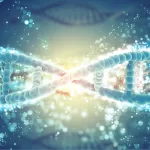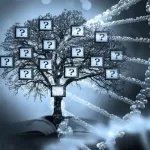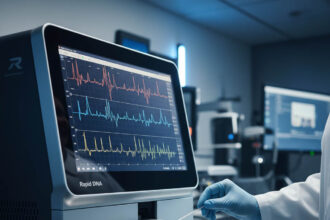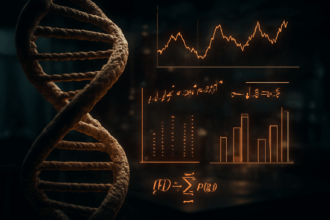DNA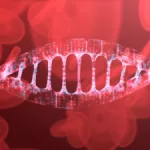 DNA, or Deoxyribonucleic Acid, is the genetic material found in cells, composed of a double helix structure. It serves as the genetic blueprint for all living organisms. Read Full Definition technology has come a long way since its discovery in the 1950s. Today, it is used in various fields, including medicine, forensics, and agriculture. In addition, the advancements made in DNA technology have revolutionized the way we approach problems and find solutions. In this article, we will discuss some of the most significant advances in DNA technology.
DNA, or Deoxyribonucleic Acid, is the genetic material found in cells, composed of a double helix structure. It serves as the genetic blueprint for all living organisms. Read Full Definition technology has come a long way since its discovery in the 1950s. Today, it is used in various fields, including medicine, forensics, and agriculture. In addition, the advancements made in DNA technology have revolutionized the way we approach problems and find solutions. In this article, we will discuss some of the most significant advances in DNA technology.
CRISPR-Cas9 Gene Editing
Clustered Regularly Interspaced Short Palindromic Repeats (CRISPR) and CRISPR-associated protein 9 (Cas9) are the two components of the revolutionary gene-editing tool CRISPR-Cas9. The technology enables scientists to modify the genome of living organisms with high precision and accuracyIn scientific and measurement contexts, "accuracy" refers to the degree of proximity or closeness between a measured value and the true or actual value of the measured quantity. Accuracy indicates how well a measurement reflects Read Full Definition. As a result, CRISPR-Cas9 can cure genetic disorders that were once thought to be incurable. Scientists have already used CRISPR-Cas9 to cure genetic diseases such as sickle cell anemia and Huntington’s disease in mice.
The technology uses an RNA moleculeA molecule is a fundamental unit of matter composed of two or more atoms that are chemically bonded together. It is the smallest possible amount of a particular substance that retains all of the unique Read Full Definition to guide the Cas9 enzyme to a specific location on the genome. Once the Cas9 enzyme is in place, it cuts the DNA at that location, allowing scientists to add, delete or replace specific genes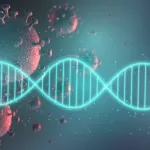 Genes are DNA segments (or RNA in some viruses) that dictate cellular processes, traits, and hereditary information, promoting genetic diversity and evolution in living organisms. Read Full Definition. This precise"Precise" refers to the degree of closeness or consistency between multiple measurements or values taken under the same conditions. It indicates how well these measurements agree with each other, regardless of whether they are accurate Read Full Definition gene editing has the potential to revolutionize medicine, allowing doctors to cure genetic disorders at the molecular level.
Genes are DNA segments (or RNA in some viruses) that dictate cellular processes, traits, and hereditary information, promoting genetic diversity and evolution in living organisms. Read Full Definition. This precise"Precise" refers to the degree of closeness or consistency between multiple measurements or values taken under the same conditions. It indicates how well these measurements agree with each other, regardless of whether they are accurate Read Full Definition gene editing has the potential to revolutionize medicine, allowing doctors to cure genetic disorders at the molecular level.
Next-Generation Sequencing
Next-generation sequencing (NGS) refers to a set of high-throughput sequencing technologies that allow us to sequence DNA and RNA at an unprecedented rate. NGS has revolutionized the field of genomics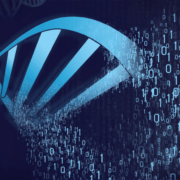
NGS has also made personalized medicine a reality. With NGS, doctors can sequence a patient’s genome to identify genetic mutations that cause diseases and tailor treatments accordingly. This customized medicine approach can improve patient outcomes and reduce healthcare costs.
The technology works by breaking the DNA into small fragments and sequencing them simultaneously. Powerful algorithms then reassemble the fragments into a complete genome sequence. This process has become more efficient and cost-effective over the years, making it accessible to more researchers and clinicians.
DNA Data Storage
DNA data Information in analog or digital form that can be transmitted or processed. Read Full Definition storage is a novel technology that uses DNA molecules to store digital data. DNA is an excellent storage medium because it is incredibly dense and can store vast data. As a result, technology has the potential to revolutionize the way we store and access data. For example, DNA data storage can store all the data on the internet in a space the size of a shoebox. Scientists have already stored the entire text of Shakespeare’s sonnets, a video, and an operating system on DNA.
Information in analog or digital form that can be transmitted or processed. Read Full Definition storage is a novel technology that uses DNA molecules to store digital data. DNA is an excellent storage medium because it is incredibly dense and can store vast data. As a result, technology has the potential to revolutionize the way we store and access data. For example, DNA data storage can store all the data on the internet in a space the size of a shoebox. Scientists have already stored the entire text of Shakespeare’s sonnets, a video, and an operating system on DNA.
The technology works by converting digital data into a DNA sequence. The DNA sequence is then synthesized and stored in a test tube. Next, the DNA is sequenced using NGS technology to retrieve the data, and robust algorithms are used to convert the DNA sequence back into digital data. While this technology is still in its early stages, it has the potential to be a game-changer in data storage.
Gene Synthesis
One of the more recent advancements in DNA technology is gene synthesis. Gene synthesis is the process of creating a new DNA sequence, either from scratch or by assembling smaller fragments of DNA. Scientists can use gene synthesis to create new genes that can be used to produce proteins with specific functions.
Gene synthesis has many applications, including the production of vaccines and drugs, the development of new crops, and the creation of new organisms for research purposes. With gene synthesis, scientists can create genes with specific mutations and study their effects on an organism. This technology has the potential to accelerate research in many fields and lead to breakthrough discoveries.
CRISPR-Cas13 Gene Editing
Another recent advancement in gene editing is CRISPR-Cas13. This tool is similar to CRISPR-Cas9 but targets RNA instead of DNA. Scientists can use CRISPR-Cas13 to edit RNA and control gene expression.
CRISPR-Cas13 has many applications, including treating viral infections and developing new therapies for diseases such as cancer. This technology has the potential to be more precise than CRISPR-Cas9 and could lead to new treatments for a wide range of diseases.
Conclusion
In conclusion, DNA technology has come a long way since its discovery, and the advancements made are nothing short of remarkable. CRISPR-Cas9 gene editing, Next-generation sequencing, DNA data storage, gene synthesis, and CRISPR-Cas13 are just a few examples of how DNA technology is changing the world. The potential benefits of these technologies are vast, from curing genetic disorders to revolutionizing data storage and creating new organisms for research purposes. We are excited to see what the future holds for DNA technology and how it will continue revolutionizing our world.





